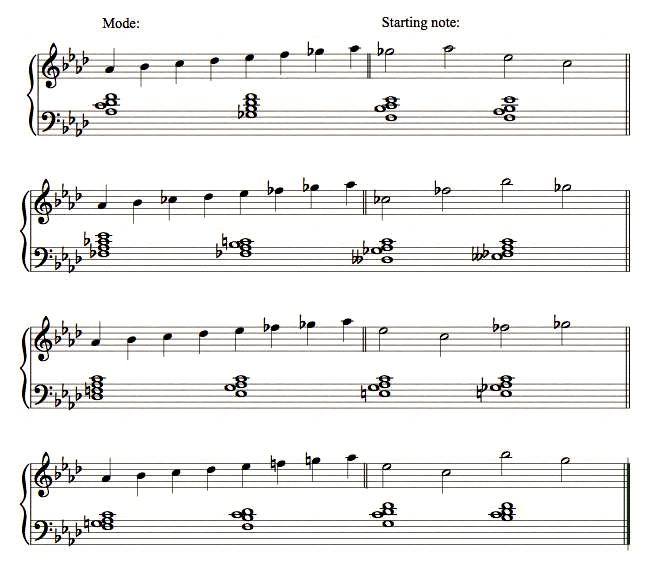
The following chart shows the underlying harmonies of the opera eL/Aficionado. Every scene runs through all sixteen chords, though at varying speeds. Within each section, Thomas Buckner improvises his lines on the mode given above the chords. The starting pitches of each phrase are given as half-notes, and given a different order for each scene. The most audible harmonic changes come at the end of each four-chord section, which is basically a change of key. In the "My Brother Called" scenes, the key changes occur at 1:00, 2:00, and 3:00 in the four-minute-long movements, and at 1:30, 2:30, and 3:30 in the four-and-a-half-minute movements. The scene "A Simple Border Crossing" takes 17 minutes to go through the chord progression more slowly, over a B-flat drone articulated every six beats (every five seconds). In "An Answer Is Expected," each chord lasts either one minute (72 beats) or 90 seconds (108 beats). In "Viva's Boy," the chord changes every 23.3 seconds (28 beats), although the beat is not articulated:

For example, here is an audio excerpt from the first "My Brother Called" episode, starting about 20 seconds in:
Buckner's first sung phrase starts on G-flat, the second on A-flat, the third on E-flat, and the fourth on C, the remainder of the line following the mode indicated. Then there's a tonality change, and the next phrase starts on C-flat. (In other scenes, these opening pitches appear in different permutations, according to an arbitrary scheme.) Notice that Ashley's questions and Buckner's replies overlap, which is standard procedure for an interrogation in Ashley's operas. Jacqueline Humbert is also singing personals ads in the background, which are the template that Buckner ("The Agent") is supposed to couch his spy infortation in.
You can buy the recording of eL/Aficionado via Lovely Music or via Amazon.
